Everest Three Peaks Climbing
This 25-day expedition combines the ascent of Mera Peak, Island Peak, and Lobuche Peak in the Everest region, offering a challenging and scenic multi-peak adventure. It includes crossing the adventurous Amphu Laptsa Pass and provides a deep immersion into Sherpa culture. Price is on request.
Mera Peak, Island Peak, and Lobuche Peak Climbing in the Everest region is one of Nepal’s most exciting multi-peak adventures. For trekkers and climbers looking to summit two or more peaks in one expedition, this combination offers the perfect balance of challenge, scenery, and efficiency.
The three peaks—Mera Peak (6,470m), Island Peak (6,165m), and Lobuche East (6,119m)—each offer unique climbing experiences. Mera Peak provides a relatively less technical ascent with 360-degree panoramic views of five of the world’s highest mountains: Everest, Kangchenjunga, Lhotse, Makalu, and Cho Oyu. Island Peak, also known as Imja Tse, is a popular technical peak with ice and mixed climbing sections. Lobuche Peak features rock and ice climbing on steep ridges and offers rewarding summit views.
This itinerary also includes the challenging Amphu Laptsa Pass (5,800m), one of the most adventurous high passes in Nepal. By combining the three peaks into one expedition, climbers can save time and
Trip Facts
Group Size
01 to 15 pax
Maximum Elevation
6470m at Mera Peak
Location
East of Nepal - Sagarmath and Makalu Barun National Park
Route
KTM-KTM
Grade
Mountaineering III
Best Season
Autumn (Sep. to Nov.) and spring (March to May)
Accommodation
Hotel/Lodge and camping
Transportation
To/ from Lukla by flight
Immersion in Sherpa culture, visits to monasteries, and exploration of traditional villages. Engage with the warm hospitality of the Sherpa people, explore traditional villages like Khumjung and Kunde, and immerse yourself in local customs and traditions.
Experienced guides trained in first aid, with a strong emphasis on acclimatization and altitude sickness prevention.
Amphu Laptse pass away from classic Everest trails. Trek through the beautiful, high alpine Hunku Valley. Challenging Amphu Labtsa high pass crossing (requires camping). Combination of guesthouse stays and camping along the route.
Nepal’s highest trekking peak Mt Mera peak 6470m, famous peaks Island 6180m and Lobuje peak 6119m, Equipment-free summit climb, suitable for well-acclimatized trekkers, Stunning panoramic views of four of the five highest mountains on Earth,
The vibrant heart of the Khumbu region, featuring the Sagarmatha National Park office, Sherpa museums, monasteries, and the Everest View Hotel, which provides stunning views of Ama Dablam and Everest.
The largest monastery in the region, offering daily worship ceremonies at 6 am and 3 pm.
Spring (March–May) and autumn (September–November) for optimal weather and trail conditions.
Guided by certified, first-aid-trained guides and Khumbu-based porters for safety and authentic insights.
- Pick up/drop from domectic Airport to Hotel.
- Kathmandu/Ramechhap to Lukla both way domestic flight ticket.
- Accommodation during the trekking: Single/Twin-sharing room with wooden beds, foam mattresses, and blankets (bring a sleeping bag for extra warmth/hygiene). Most of the place have shared toilets (usually Asian-style squat or Western toilets). Some of the place has attached toiled. Hot showers available (on extra cost). Higher up, hot water is scarce.
- Tented Camping: North face Tented Camp, Dom Tent, kitchen/dinning/toilet Tents, matters, all kitchen camping equipment, and cooking fuel during the climbing/mountaineering as itinerary.
- Camping / Upper camps’ meals (Breakfast, Lunch and Dinner) with hot drinks, high foods etc.
- Snacks for climbing: Pack energy bars, nuts, chocolate, or local chyura (beaten rice) for quick energy boosts between meals during the climbing/expedition only.
- Breakfast: Porridge/Oatmeal (often with honey, fruits, or nuts), eggs (fried, scrambled, or omelets with veggies), Pancakes or Tibetan Bread (served with jam, honey, or peanut butter), Muesli/Cornflakes (with hot or cold milk), Tea/Coffee (black, milk tea, or ginger lemon honey tea) etc.
- Lunch: Dal Bhat (Nepali staple: lentil soup, rice, vegetable curry, and pickles—unlimited refills!), Noodles/Pasta (fried noodles, garlic pasta, or ramen), Momos (dumplings stuffed with veggies or meat), sandwiches (egg, cheese, or tuna), soup (garlic, mushroom, or veggie—popular for warmth and hydration) etc.
- Dinner: Dal Bhat, Curries (veggie, potato, or chicken with rice or chapati), Thukpa (local noodle soup), Pizza, Pasta, Fried Rice/Noodles, Desserts (apple pie, rice pudding, or Snickers rolls etc.).
- Sagarmath (Everest) National Park permit /Entrance fees.
- Makalu Barun National park permit/ Entrance fees.
- Mera, Island, Lobuche peaks climbing (NMA) permit /Royalty.
- Khumbu Pasang Rural Municipality Entry permit / Entrance fees.
- Entrance fees in Monastery/temple, if any.
- Trekking/climbing Guide: A First Aid and Eco trained & Government licensed holder professional equipped English-speaking climbing/mountaineering Sherpa guide.
- Support Sherpa: if the group size more than six persons, we provide one extra Sherpa to support the group.
- Porters: One Porter between each 2 members while on trek (Maximum weight for a porter is 25 Kg). If you are single booking the porter cost need to pay extra, please add the cost add on option.
- Accommodation, meals, daily salary, equipment, transportation & Insurance of Asian Hiking Team staffs (guide, Sherpa, porter).
- Peak Climbing/trekking Map /Itinerary: Asian Hiking Team provides free a copy of trekking map /trekking/peak Itinerary to our client.
- Group Climbing equipment such as fix ropes, main ropes Ice tool, Ice screws, Ice Bar, Carabineers, Locking carabineers, Short-5- millimeter accessory cords, Slings etc.
- T-short: Asian Hiking Team provide the company T-short for a souvenir.
- Certificate: Asian Hiking Team provide Trekking/Hiking/Tour/Climbing success certificate for your memory and awardees.
- First Aid: First aid is the immediate assistance given to someone who is injured or ill until professional medical help is available. Its goal is to preserve life, prevent further harm, and promote recovery. Asian Hiking Team staff carry the basic first aid. You need to bring your own personal medicine with you. If you are trekking in high altitude should be bringing Diamox for acclimatization (125 mg tabs recommended; enough for a week or more). You can buy here in Kathmandu any pharmacy.
- Farewell dinner: Asian Hiking Team provide a farewell dinner with Nepalese cultural programs the last day of the trip.
- Travel & Rescue arrangement service: You should bring insurance, must include emergency air ambulance/helicopter rescue services.
- Accommodation & meals: all meals and accommodation in Kathmandu.
- Hot drinks: Tea/ Coffees/ Hot water, hot showers etc during the hotel/lodge.
- Cold/soft drinks: All cold drinks, alcohol drinks, beer, bottle water etc.
- Snacks: Pack energy bars, nuts, chocolate for quick energy boosts between meals during the trekking.
- Personal trekking/climbing gears & clothing (some of the equipment is possible to rent in Kathmandu): please check in check list for peak climbing equipment list…
- Personal solar pack (if any) for charging heavy electronics (laptops, professional camera, batteries, etc.).
- Internet / Wi-Fi/Telephone: There are almost all trekking reason you can buy internet/ Wi-Fi service in the hotel. It is also possible to buy the NCAL or NTC Sim card for telephone or use data.
- Insurance: Medical evacuation in case of emergency, expenses incurred due to mishaps, landslide, strikes, political unrest etc. in such case extra will be charged as per actual.
- Kathmandu: During the sightseeing in Kathmandu or Pokhara the entry fees for Temple or Monastery, Durbar Square are not includes on the cost.
- The tip for guide or porter/ Summit bonus: It's a way to show appreciation for good service and is often left as a small present or in addition. Tips are a common practice in many cultures and are often expected for services.
- Porter: Asian Hiking Team provide one porter between two members. If you want to hire the additional porter, the cost in not includes.
- Sherpa/ Guide: If you want personal Sherpa/guide, it is not including on the cost.
Tailored add-ons in Nepal trips refer to customizable essentials that enhance and personalize your travel experience, allowing you to align your journey with specific interests, preferences, and schedules. These add-ons can be combined into various types of trips, including trekking, expedition, climbing, cultural tours, wildlife safaris, and adventure activities.
Options include:
Customized Accommodations: Choose from a range of lodging options, from luxury hotels to homestays, to match your comfort and budget preferences. Upgrade your stay to accommodation featuring attached bathrooms during your trek. Enjoy additional comfort at select stops.
Helicopter/mountain flight: if you have short time frame, we recommended you that one hour Mountain flight or helicopter flight to visit Everest base camp or Annapurna base camp or Langtang (Kyanjin Gomaba) or Gosaikunda, Muktinath. The cost depends on number of members, destination etc.
Adventure Activities: Incorporate thrilling experiences such as paragliding in Pokhara, bungee jumping over the Bhote Koshi River, zip-lining, mountain...
Asian Hiking Team’s Guides/Sherpa are professionals with proven records of honesty and personal integrity, committed to environmentally responsible climbing practices that minimize ecological impact. Our Climbing Guides possess extensive knowledge of all climbing disciplines, local cultures, customs, and religions, and they enthusiastically share these insights with clients. All Guides are fluent in English and speak additional languages upon request.
Asian Hiking Team’s Climbing Guides/Sherpas bring years of experience and exceptional expertise in all facets of Nepal mountaineering. Each holds a Nepal Government License, Mountaineering Association Accreditation, and Summit Certificates for Nepal Himalayan peaks. Our high-altitude Sherpa guides are qualified through rigorous training from NMA, TAAN, and NATHAM.
Every climbing guide undergoes comprehensive technical training and possesses practical mastery of:
- Rock, ice, and snow climbing techniques;
- High-altitude camp logistics, setup, and operations;
- Advanced safety protocols for high-altitude camping;
- Fixed-rope climbing, belay techniques, and all mountaineering gear usage;
- Oxygen systems, high-altitude nutrition, and...
The difficulty of the climbing or expedition depends on the peak. Trekking peaks are easier than high mountain expeditions, but some of the less high trekking peaks are also technical for climbing.
We have to calculate the grade focus on following topic:
a) Length of trek and walking days /Easy glacier route.
b) Which Mountain and altitude conditions.
c) Average altitude, maximum altitude and average gain/loss per day.
d) Likely prevailing weather conditions and temperature range.
e) Remoteness of local services and general level of comfort.
f) Rock climbing or Ice climbing.
g) Technical climbing and complicated glaciers.
h) Steep climbing or long snow/ice slopes
i) Very difficult Long, serious, remote, and highly technical Climbing over thousands of vertical feet
j) High commitment, and few bivouac sites.
Grade I: Easy glacier rout, average altitude. Grade II: Half a day or less for the technical portion of the route or not technical but exposed to knife-edged ridges, weather, and altitude. Grade III: Moderate...
Hotel/ Lodge: Single/Twin-sharing room with wooden beds, foam mattresses, and blankets (bring a sleeping bag for extra warmth/hygiene). Most of the place have shared toilets (usually Asian-style squat or Western toilets). Some of the place has attached toiled. Hot showers available (on extra cost). Higher up, hot water is scarce.
Tented Camping: Tented camping is a classic and essential part of trekking, peak climbing, and expedition in remote areas of the Himalayas where teahouse accommodation is unavailable. Asian Hiking Team provides tent (2-person or single occupancy Dom and Box tent depends on area and numbers of days), sleeping mat (foam or inflatable), dining tent, kitchen tent, toilet tent (group use - for expedition), Kitchen equipment and utensils (carried by support crew), Power bank or solar charger, heater, Generator (for expedition) etc.
During the hotel/guest house trekking, there are international menus so you can choose whatever you like. During the camping, our cook prepares the meals as your interest. Camping treks in Nepal offer a blend of traditional Nepali cuisine and familiar comfort foods, ensuring that trekkers are well-nourished and energized throughout their journey.
Breakfast: Porridge/Oatmeal (often with honey, fruits, or nuts), eggs (fried, scrambled, or omelets with veggies), Pancakes or Tibetan Bread (served with jam, honey, or peanut butter), Muesli/Cornflakes (with hot or cold milk), Tea/Coffee (black, milk tea, or ginger lemon honey tea) etc.
Lunch: Dal Bhat (Nepali staple: lentil soup, rice, vegetable curry, and pickles—unlimited refills!), Noodles/Pasta (fried noodles, garlic pasta, or ramen), Momos (dumplings stuffed with veggies or meat), sandwiches (egg, cheese, or tuna), soup (garlic, mushroom, or veggie—popular for warmth and hydration) etc.
Dinner: Dal Bhat, Curries (veggie, potato, or chicken with rice or chapati), Thukpa (local noodle soup), Pizza,...
We use a combination of transport modes:
- Air: Domestic flights (e.g., Kathmandu to Lukla) and helicopter services for scenic or emergency transport.
- Road: Private vehicles (cars, vans, jeeps) and tourist buses for travel between cities and to trek start points.
- Traditional: Porters and yaks are used to transport gear in mountain regions.
General Climate Overview Nepal's climate is incredibly diverse due to its dramatic range in altitude—from the lowland Terai plains (around 60 meters above sea level) to the Himalayan peaks above 8,000 meters. The country experiences five main seasons: spring, summer, monsoon, autumn, and winter. Each region and elevation zone has its own unique weather patterns.
Terai Region (Southern Plains)
- Climate: Subtropical
- Summer (May–June): Hot and humid, temperatures often exceed 37°C
- Winter (Dec–Feb): Mild, temperatures range between 7°C to 23°C
- Receives significant rainfall during the monsoon (June–September)
Hilly Region (Mid-Hills & Valleys)
- Climate: Mild and temperate
- Cities like Kathmandu and Pokhara experience:
- Summer: 19°C – 35°C
- Winter: 2°C – 12°C
- Pleasant weather year-round with occasional winter chills and summer showers
Mountain Region (High Himalayas)
- Climate: Alpine to Arctic
- Summer: Cool to cold, depending on altitude
- Winter: Severe cold with frequent snowfall
- Temperatures can drop below -20°C at high passes and base camps *...
Nepal Mountaineering Association has made the following rules to be observed for the climbing of the peaks of Nepal Himalaya listed in Appendix '1'. These rules will come into force at once.
Definition: -
Where applicable, definitions for these rules will be the same as those for Government of Nepal Mountaineering Expedition Regulations 1979 and its first Amendment 1984.
Permission:-
Any person or mountaineering team desirous of climbing the peak listed in Appendix '1' must receive permission from Nepal Mountaineering Association. Application to climb the peak must be made in the form as prescribed in Appendix '2'. Permission to climb the peaks will be granted for a period of one month only. Permission may be extended, if necessary, for another period of two weeks. The period of permission granted relates to time spent for climbing above the base camp. The trek to and from the base camp is not included. Application for...
Altitude Mountain Sickness (AMS)
Trekking in the Himalayas poses risks of Altitude Sickness (AMS). The body needs time to acclimatize to higher altitudes, a process known as acclimatization.
Types of Altitude Illnesses (Acute Mountain Sickness, AMS)
- High Altitude Pulmonary Edema (HAPE): Fluid in the lungs
- High Altitude Cerebral Edema (HACE): Swelling of the brain
- High Altitude Retinal Hemorrhage (HARH): Bleeding in the retina
Common Symptoms:
- Headache
- Nausea, loss of appetite
- Sleep disturbance
- Dizziness, mild weakness
- Swelling of hands and face
Severe Symptoms (Seek Immediate Descent):
- Severe, persistent headache
- Shortness of breath at rest
- Confusion, loss of coordination
- Bluish lips or face
- Coughing blood-tinged sputum
- Coma or unconsciousness
Prevention Tips:
- Drink 4–5 liters of fluids daily (avoid alcohol)
- Ascend slowly and rest if symptoms appear
- Avoid sleeping at a higher altitude if symptoms persist
- Take Diamox (consult your doctor) before flying to altitude
Food & Water Safety In Nepal, water and food contamination are common causes of illness.
Do:
- Drink boiled, filtered, or bottled water
- Eat thoroughly cooked meals
- Wash fruits/vegetables before eating
- Boil milk...
NTC and Ncell SIM cards offer good coverage in the Khumbu region, though service can be spotty at high altitudes. Everest Link Wi-Fi is available at most teahouses and lodges for a fee. For emergencies, our guides carry a satellite phone.
Comprehensive travel insurance is mandatory for this expedition. Your policy must cover:
- Emergency Air Ambulance/Helicopter Rescue
- Medical Expenses
- Trip Cancellation and Interruption You must provide proof of insurance before the trip begins.
We are committed to responsible tourism. Our policies include:
- Environmental: Minimizing waste, using gas for cooking, and leaving no trace.
- Cultural: Respecting local customs, asking permission for photos, and supporting local economies.
- Community: Donating a portion of profits to community projects and ensuring fair treatment and wages for all staff and porters.
Climbing Gear : Ice Axe/Ice Hammer: Bring a lightweight axe with a pick that will stick easily in hard glacier ice. Attach a lightweight wrist leash that is usable for climbing steeper terrain.Boot: Double Climbing Boots with expedition liners: Make sure your crampons can be adjusted to fit them. Or for the peak climbing you can use plastic boot too.Crampons: These must be sharp and must fit your boot perfectly.Harness: Make sure the buckle is easy for you to thread in cold conditions! Gear loops will be useful for this trip, as well as adjustable leg loops.Helmet: Be sure you can comfortably fit a warm hat underneath.Hardware: Bring 2 locking and 3 lightweight regular carabineers. It is helpful if at least one of the locking carabineers has a "key gate", like the Petzl Attaché. Our guide have Ice tool, Ice screws, Ice Bar, Carabineers, Locking carabineers, Short-5- millimeter accessory cords, Slings.Ascender / rappel: Bring one handled ascender, Rappel for descend and one Petzl Tibloc for ascending the fixed rope.
Footwear Items : Hiking Boot: These boots provide more stability and ankle protection against protruding limbs and rocks than hiking shoes do. Mountain walking or hiking boots are designed for mountain and hill walking, backpacking and mountaineering. Gaiters and Micro spikes: if you are trekking in high passes you should prepare gaiters and Micro spikes in case of snow. You can buy in Kathmandu.Sport sandals: Sandals (such as Teva's) are lightweight and tough, doubles as shower slippers.Socks: Three/Four sets of warm socks.
Necessary Climbing Clothes : Jacket: Lightweight waterproof-breathable construction with a hood -20 Down Jacket.Pants: Lightweight waterproof-breathable shell pants or bibs with full-length leg zippers. ALSO, very useful are synthetic insulation full-zip pants, for example, Mountain Hardware Compressor Pants--for evenings and cold summit days or down paint.Mid-Layers: Fleece or Soft Shell layering pieces that work well with the rest of your clothing. A Soft Shell jacket and an expedition weight long john top will work well.Climbing Pants: Look for construction that provides freedom of movement and/or stretch materials. Fabric should be a breathable synthetic that preferably holds up to abrasion.Base Layers: - 2 synthetic tops and 1 bottom. Zip neck tops are the way to go.Mittens: Fleece mittens with an over mitten. Nothing competes with a mitten for warmth when the going got tough.Ski Gloves/Light Gloves/ Leather gloves: A warm insulated glove with leather palm will be worn a lot of the time. Polypropylene or fleece. Leather palms handle the fixed line better. Or good abrasion resistant climbing glove for the rock sections.Trousers: Water-resistant hiking pants (for TK), North Face and Patagonia are good brands, avoid jeans, pants with zip-off legs can come in handy.T-Shorts: 1/2 pair of t-shorts (for TK), walking shorts. Loose and comfortable, preferably nylon, which (for men) double as a swimsuit. (Avoid shorts which are too revealing.) T-shirts (TK/TR).Over-shirt: 1 long-sleeved over-shirt, light to medium weight and breathable, to protect you from the sun and bug bites. Hemp, linen or cotton is recommended.Belt: 1 belt, cotton or nylon lashing strap doubles as a gear strap.Hat: Wool or fleece stocking hat with ear protection and Sun hat.Neck Gaiter and/or a Buff (highly recommended), Baseball hat and Bandana. Underpants/panties, Bra: 2–3 pairs.
Trekking Gear : Trekking Poles: Poles come in handy for balance and easing impact to your knees. Get collapsible poles that can attach to your backpack and fit into your Duffel.Backpack: You may choose to bring a smaller "day pack" for your airline travel carry on, and this can be used on the trek if you want to carry a smaller (35 liter or so), light trekking pack. You need a pack big enough for your clothes, water, camera, food, etc. during the day.Pack Cover: Waterproof rain cover for your trekking pack.Sleeping Bag: Bring a sleeping bag comfortable to -20 for trekking, however it is better to bring -30 for climbing. During the trekking in hotel/guest house -20 is fine but on the tented home you need -30. Down is lighter and much more compressible. Keep in mind that many of your nights will be much warmer than -20, especially on the trek in to base camp.Duffel Bags: Asian Hiking Team provide one duffel bags each member as you want. We normally pack all our equipment in large Duffel bags. Make sure they are well labeled with indelible ink as well as a travel tag. The duffels go on the trek/climb with you and will be carried by porters or yaks. Except for them to get wet and muddy, so rugged, waterproof duffels are good. Bags with wheels are nice for the airport, but the porters and yaks don't like to carry them, so don't bring wheeled bags (or at least not two of them). You will also store some travel clothes at the hotel in Kathmandu while trekking, so a small additional bag with a lock might be handy. Bring 5 large plastic garbage bags to pack gear inside duffels to protect gear from rain.
Others Accessories : Headlamp: Bring a good LED headlamp with 2 sets of lithium batteries for cold conditions.Water Bottles: 2 wide mouth plastic water bottles with insulated covers. A small Thermos bottle is great for cold mornings. Bring a pee bottle too (optional).Water purification: Iodine tablets (Potable Aqua or similar) or iodine crystals (Polar Pure). One bottle of Potable Aqua (enough to treat 25 liters) should be more than sufficient.Sleeping Bag: Bring a sleeping bag comfortable to -20 for trekking, however it is better to bring -30 to -35 for climbing. During the trekking in hotel/guest house -20 is fine but on the tented home you need -30 or -35. Down is lighter and much more compressible. Keep in mind that many of your nights will be much warmer than -20, especially on the trek in to base camp. Eyewear: Bring good sunglasses with side protection. For contact lens wearers, ski goggles with light color lenses (for use at night) might be useful in windy conditions. The ski goggles are essential for all climbers in really stormy conditions and can serve as an emergency backup for broken or lost sunglasses.Vision correction: Bring extra prescription eyeglasses or contact lenses if you wear them. Lens solutions are not widely available in Nepal, bring enough for the duration.Wrist Watch: With alarm and night light. An altimeter watch is useful.First Aid: Hand sanitizer (Pirelli), moleskin or Compete, athletic tape, aspirin (some climbers take a baby aspirin every day up high) and/or ibuprofen / acetaminophen, Imodium, Band-Aids, antacid, insect repellant, ear plugs, and two rolls of toilet paper in quart Ziploc bags (we will have a supply at Base Camp), small towel, soap/shampoo.Prescription Medications: Antibiotic for upper respiratory problems, Antibiotic for GI problems, Diamox for acclimatization (125 mg tabs recommended; enough for a week or more), Tylenol 3 or similar for severe headaches, Asthma medication, if any history.Skin Care: Sun block lotion (at least #30 protection factor -- have at least one smaller tube (1 oz) that can fit in your pocket) and lip salve. Put your lip protection on a string and hang it from your neck. That way you'll use it. It also works great for your nose.Personal Snack Food: The food is great on the trek, but you might enjoy a few snacks/chocolates.
Travel Items : Passport (valid for at least 6 months): It is easy to get your Nepal visa on arrival in Kathmandu at the airport, bring a passport photo. Bring a copy of the information pages and a couple of extra passport photographs. Carry these in a separate location. You'll be glad you did if you ever lose a passport.Camera: with spare batteries, and film or memory cards, but keep it reasonable and weight. Consider a small USB drive to make it easy to share photos with your teammates.Bathing Suit: Towel, Toothpaste and brush, floss, mini hairbrush, razor, soap, mini bottle of shampoo, travel mirror, nail clippers etc.Travel Wallet: Some type of secure travel wallet is a must. Remember a pen for travel documents. MP3 Player and Books: As you want to read on the way to trekking. Plan on sharing books on hotel/guest house or MP3 player. Chemical Hand Warmers (not compulsory).

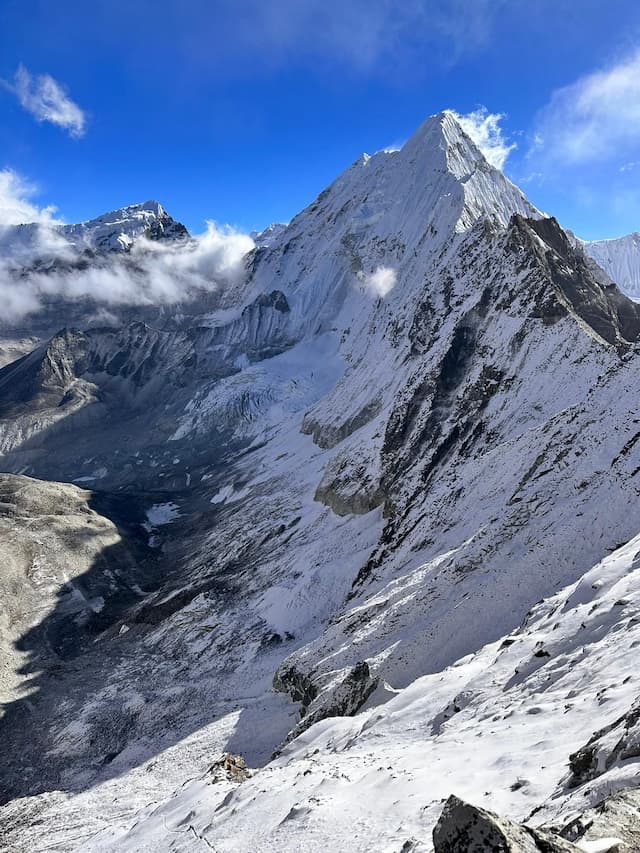
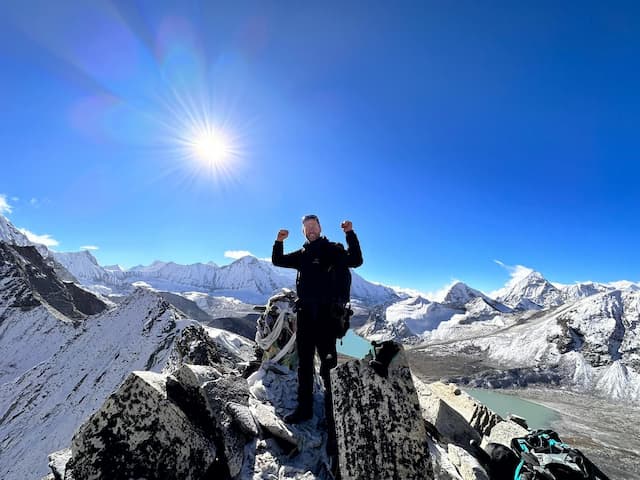
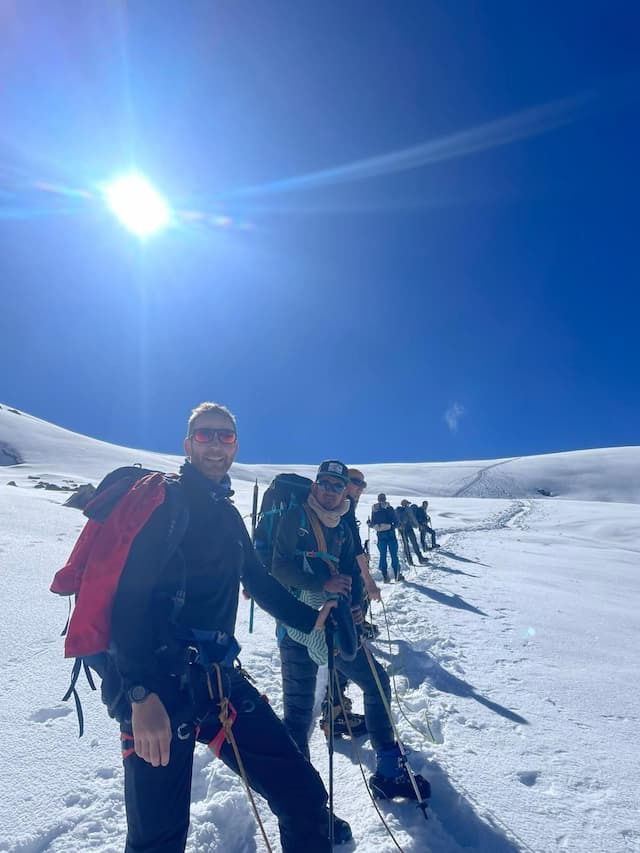


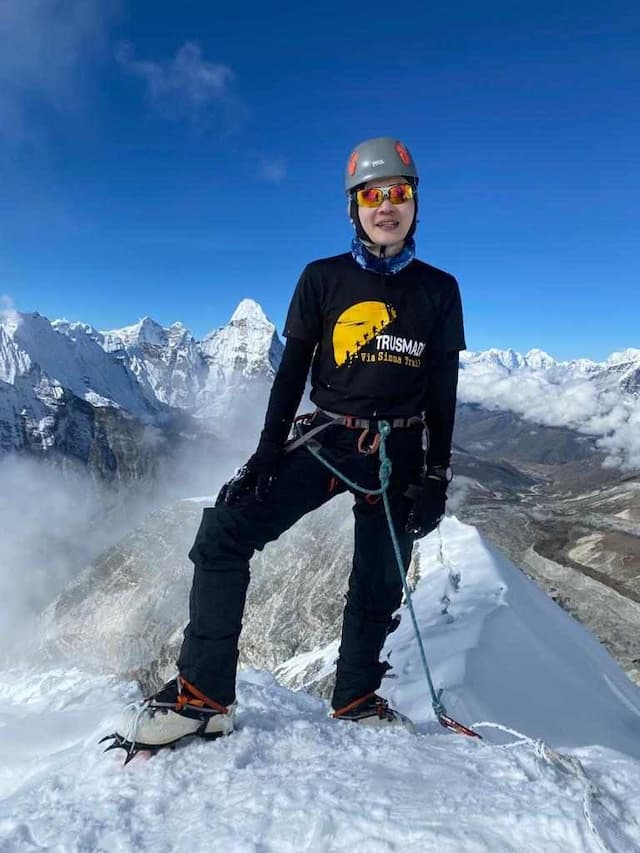
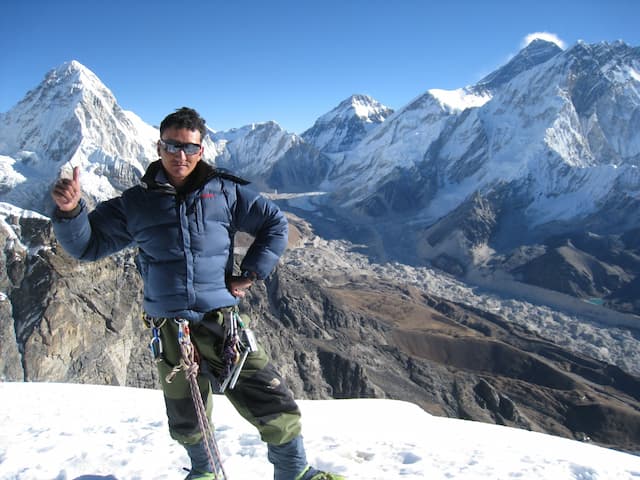






 0
0 0
0 0
0 0
0

 0
0
